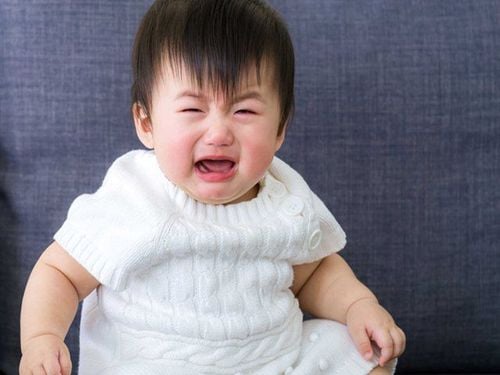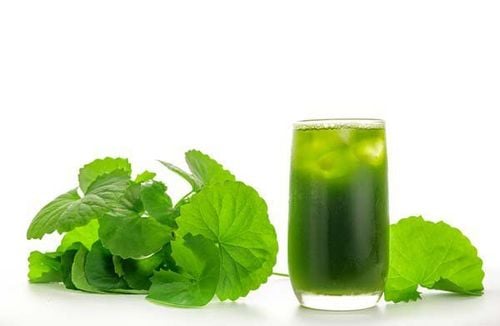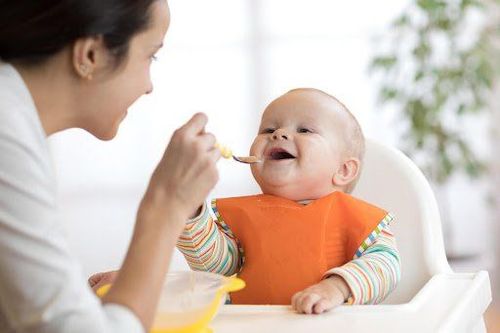This is an automatically translated article.
The article is expertly consulted by Master, Doctor Truong Thanh Tam - Pediatrician - Pediatrics - Neonatology - Vinmec Danang International General Hospital. Dr. Tam has 15 years of experience working in the field of Pediatrics.Food poisoning occurs when your baby or toddler eats food or drinks water contaminated with disease-causing bacteria. Some viruses can also cause food poisoning. Because their immune systems are still developing, children under the age of 5 are at higher risk of food poisoning.
1. Signs to know your child has food poisoning
If your child has food poisoning, symptoms will likely appear 2 to 48 hours after he or she eats the food. Symptoms will usually last a day or two, but can continue for a week or more in severe cases.With children, it can be difficult to distinguish food poisoning from gastroenteritis because the symptoms are so similar.
Food poisoning symptoms: Vomiting, diarrhea, abdominal pain, nausea, fever, chills, headache, excessive fussiness (may signal abdominal pain).
Symptoms of more serious food poisoning include:
Vomiting for more than three days Severe headache or stomach pain Blood in stool or vomit Tight abdomen Drowsiness Dehydration .

Trẻ dưới 5 tuổi có nguy cơ bị ngộ độc thực phẩm cao hơn bình thường
2. Handling food poisoning in children
The most important thing is to keep your child hydrated enough to replace the fluids his body loses through vomiting and diarrhea. Feed your baby from the breast or bottle, and give your toddler or toddler sips of water. If your baby or toddler doesn't want to drink, giving fluids by means of a syringe can help. Your doctor may suggest giving your child an electrolyte solution to replace the fluids and electrolytes (salts and minerals) your child's body is losing. Avoid sugary drinks including juices and soft drinks as they can make symptoms worse. Usually, a case of food poisoning just needs to run its course. However, if your child is severely dehydrated, the doctor may admit him or her to the urgent care or emergency room for intravenous fluids. If your baby has a fever, your doctor will prescribe acetaminophen if your baby is over 2 months old, or ibuprofen if your baby is over 6 months old. Sometimes, in the case of bacterial food poisoning, a doctor will prescribe antibiotics.3. When will she be able to eat and drink normally again?
Once your child's vomiting and diarrhea have subsided and the food is tolerated, resume normal diet as soon as possible and possibly add staple foods such as complex carbohydrates ( such as breads, cereals and rice), lean meats, yogurt, fruits and vegetables. Stay away from fatty foods, which can make symptoms worse.
Thức ăn béo có thể làm cho các triệu chứng ngộ độc của bé trở nên tồi tệ hơn
4. Prevention of food poisoning in children
It is not possible to protect your child from all food-borne bacteria. But you can reduce your baby's risk of food poisoning by following safe food preparation and storage procedures. Here are some important things:4.1 Storing food safely Defrost food in the refrigerator, not on the stovetop or in the sink. Do not eat undercooked meat, poultry, or fish in the refrigerator for more than a day or two. Do not use food that is past its use-by date, packaged food with broken seals, or canned food that is dented or distorted. Do not leave food or drinks outside the refrigerator for more than an hour before consuming. Keep hot food and food cold before eating. Clean the lid of canned goods before opening. 4.2 Safe food preparation Always wash your hands before handling food. Rinse fruits and vegetables under cool running water. Use a manufactured brush to remove dirt. After preparing raw meat, poultry, or fish, thoroughly rinse all kitchen surfaces with hot, damp water.

Chuẩn bị thực phẩm an toàn và đảm bảo để phòng ngừa ngộ độc ở trẻ nhỏ
Parents can learn more:
Why do you need to supplement Lysine for your baby?
The role of zinc - Guidelines for reasonable zinc supplementation
Please visit the website Vinmec.com regularly and update useful information to take care of your baby and family.
Reference source: babycenter.com














